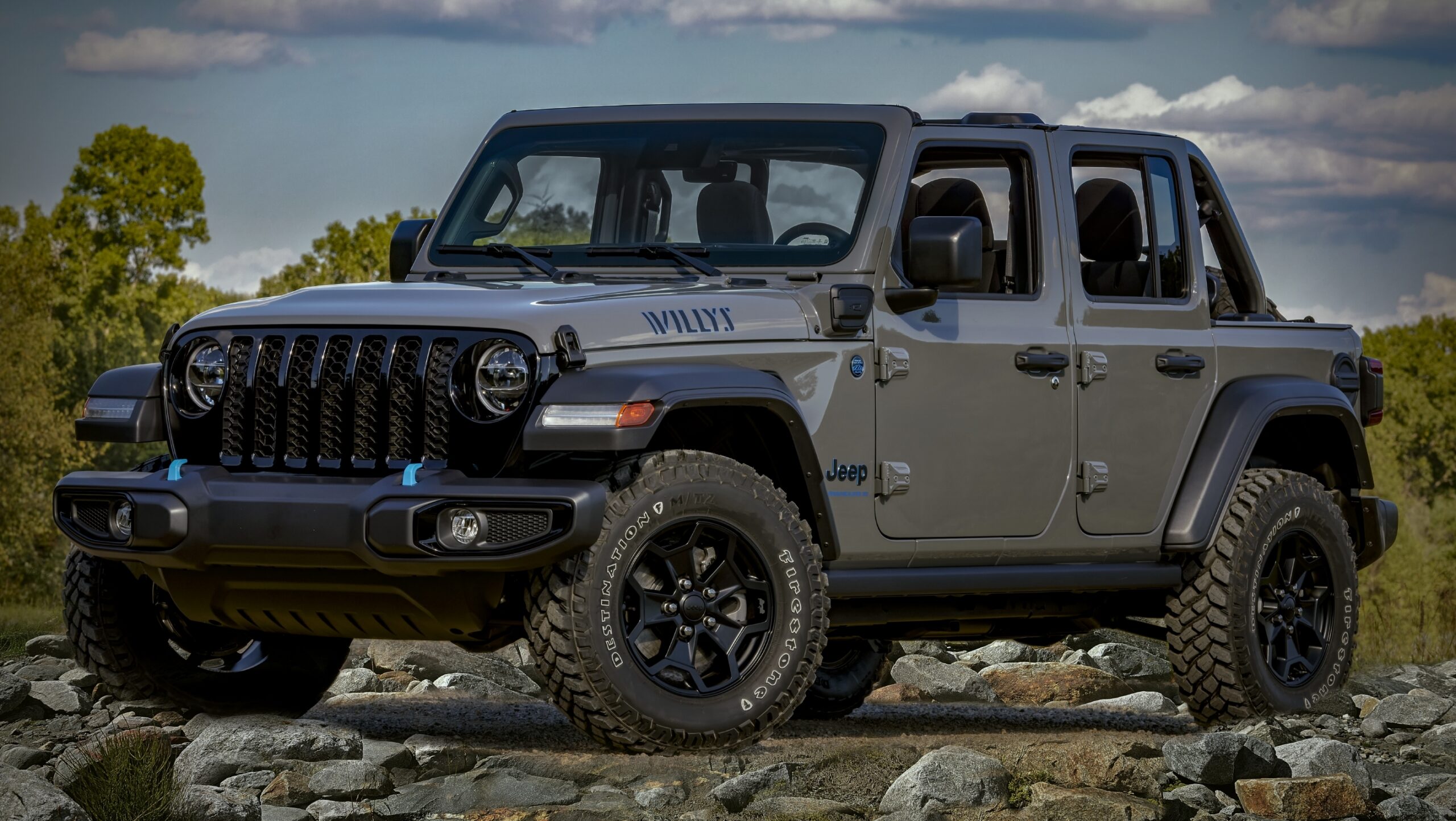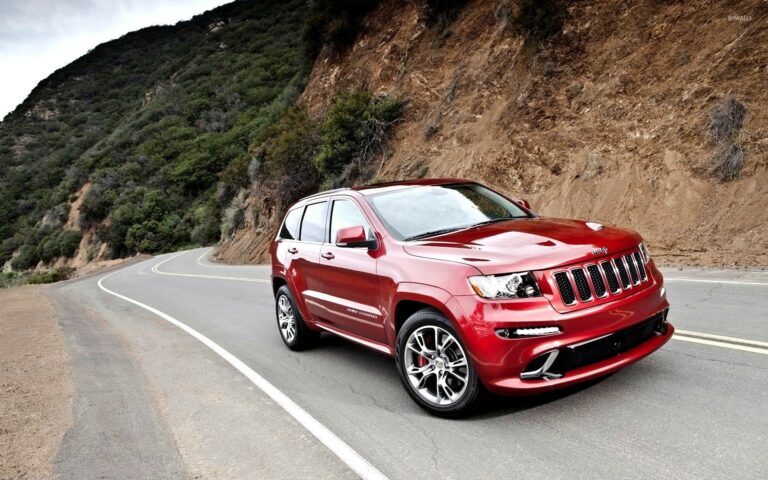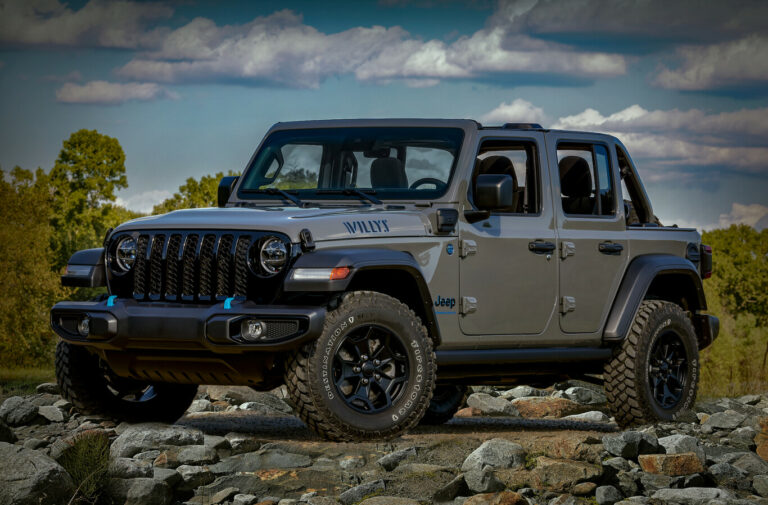Jeep Grand Wagoneer Parts For Sale: Your Essential Guide to Restoration and Maintenance
Jeep Grand Wagoneer Parts For Sale: Your Essential Guide to Restoration and Maintenance jeeps.truckstrend.com
Introduction: The Enduring Legacy and the Quest for Parts
The Jeep Grand Wagoneer (specifically the SJ generation, produced from 1984-1991) is more than just an SUV; it’s an icon. A quintessential blend of rugged capability, surprising luxury, and unmistakable woodgrain styling, it holds a special place in automotive history and the hearts of enthusiasts. Owning a Grand Wagoneer is often a passion project, a commitment to preserving a piece of American automotive heritage. However, like any vintage vehicle, maintaining or restoring a Grand Wagoneer requires a steady supply of parts. The quest for "Jeep Grand Wagoneer parts for sale" isn’t merely about fixing a broken component; it’s about sustaining a dream, ensuring the longevity, performance, and aesthetic integrity of these beloved classics.
Jeep Grand Wagoneer Parts For Sale: Your Essential Guide to Restoration and Maintenance
This comprehensive guide will navigate the intricate world of Grand Wagoneer parts, from understanding what you need and where to find it, to practical advice, pricing considerations, and common challenges. Whether you’re undertaking a full frame-off restoration, performing routine maintenance, or simply replacing a worn-out switch, knowing where to source the right parts is paramount to keeping your Grand Wagoneer on the road and looking its best.
The Enduring Allure of the Grand Wagoneer: Why Parts Matter
The Jeep Grand Wagoneer’s appeal lies in its unique fusion of attributes. It pioneered the luxury SUV segment, offering amenities like leather seats, air conditioning, power windows, and a sophisticated four-wheel-drive system long before it became common. Its boxy silhouette, often adorned with signature faux woodgrain paneling, evokes a sense of timeless Americana and adventure.
However, time takes its toll. Decades of use, exposure to elements, and the inevitable wear and tear mean that components degrade, rust forms, and electrical systems falter. For Grand Wagoneer owners, parts aren’t just commodities; they are the lifeblood of their vehicle.
- Routine Maintenance: Like any vehicle, Grand Wagoneers require regular oil changes, filter replacements, brake pad swaps, and suspension component checks. Sourcing these basic wear items is crucial for safe and reliable operation.
- Repairs: Over time, more significant components like engines, transmissions, transfer cases, or electrical modules may fail, necessitating replacement or extensive repair.
- Restoration Projects: Many owners embark on full-scale restorations, aiming to return their Grand Wagoneer to its original glory, or even better. This requires a vast array of parts, from body panels and interior trim to every nut and bolt.
- Customization and Upgrades: Some owners choose to modernize their Grand Wagoneer with aftermarket upgrades, such as fuel injection conversions, improved braking systems, or contemporary audio setups, which also involves sourcing specialized parts.

The availability and quality of parts directly impact the feasibility and cost of owning and maintaining these classic SUVs.
Types of Grand Wagoneer Parts You’ll Encounter
When searching for Jeep Grand Wagoneer parts, you’ll encounter a wide variety, categorized by their function and location within the vehicle. Understanding these categories will help you narrow down your search.

-
Mechanical Components: These are the heart and soul of your Wagoneer, responsible for its power and motion.
- Engine Parts: For the venerable AMC 360 V8 (and occasionally the rarer 401 V8), this includes everything from pistons, rings, and camshafts to gaskets, oil pumps, and carburetor components (or fuel injection conversion kits).
- Transmission & Transfer Case Parts: Rebuild kits, seals, clutches, torque converters for the automatic TorqueFlite 727 or 904/A999 transmissions. For the NP229 (Selec-Trac) or NP208 (Command-Trac) transfer cases, expect chains, bearings, and seals.
- Drivetrain & Axle Parts: U-joints, driveshafts, differential gears, bearings, and seals for the sturdy Dana 44 axles.
- Brake System Parts: Rotors, calipers, brake pads, drums, shoes, master cylinders, brake lines, and booster assemblies.
- Steering & Suspension Parts: Ball joints, tie rod ends, control arms, leaf springs, shock absorbers, steering boxes, and power steering pumps.
- Cooling & Fuel System Parts: Radiators, water pumps, hoses, fuel tanks, fuel pumps, and fuel lines.

-
Exterior Body Parts: These define the Grand Wagoneer’s iconic look and protect its interior.
- Sheet Metal: Fenders, hoods, doors, tailgate (a common rust area!), rocker panels, and floor pans. Often requires rust repair or replacement.
- Trim & Brightwork: The famous "woodgrain" vinyl trim (often sold as a complete kit), chrome bumpers, grille inserts, headlight bezels, side moldings, and window trim.
- Glass: Windshields, side windows, and rear hatch glass.
- Lighting: Headlights, taillights, turn signals, and marker lights, including their lenses and housings.
-
Interior Components: Essential for comfort, functionality, and aesthetics.
- Seating: Leather or cloth seat upholstery, foam, seat frames, and power seat motors/switches.
- Dashboard & Gauges: Dash pads (prone to cracking), instrument clusters, individual gauges, and various switches.
- Door Panels & Trim: Inner door panels, armrests, window cranks (for manual windows), and power window switches.
- Carpeting & Headliners: Pre-cut carpet kits, sound deadening material, and headliner boards/fabric.
- HVAC System: Heater cores, blower motors, AC compressors, condensers, and climate control units.
-
Electrical System Parts: The nervous system of the vehicle.
- Wiring Harnesses: Complete engine, body, or dash harnesses (often reproduced or custom-made).
- Switches & Relays: For lights, wipers, power windows, seats, and ignition.
- Sensors & Modules: Various sensors for engine management, gauges, and emissions.
- Alternators, Starters, Batteries: Essential for starting and charging.
Where to Find Jeep Grand Wagoneer Parts For Sale
Finding the right parts requires knowing where to look. The landscape of classic car parts has evolved, offering several avenues.
-
Specialty Online Retailers: These are often the first and best stop for Grand Wagoneer owners. Companies like BJ’s Off-Road, Team Grand Wagoneer, and Wagoneer World specialize exclusively in these vehicles.
- Benefits: Deep expertise, comprehensive catalogs, high-quality reproduction parts, NOS (New Old Stock) items, and often excellent customer support. They understand the nuances of different model years.
- Practical Advice: Bookmark these sites, sign up for their newsletters, and don’t hesitate to call their customer service with specific questions.
-
General Automotive Parts Websites: For more common mechanical components that cross over with other AMC or Jeep models (like engine parts, brakes, and some suspension components), sites like RockAuto.com, SummitRacing.com, and Jegs.com can be useful.
- Benefits: Competitive pricing, wide selection for generic components, quick shipping.
- Practical Advice: Always double-check part numbers and applications against your vehicle’s specifications or service manual.
-
Online Marketplaces & Forums:
- eBay: A treasure trove for both new and used parts, NOS, and even custom-fabricated items. Use specific search terms like "Grand Wagoneer 360 engine," "Wagoneer woodgrain," or "SJ Cherokee parts."
- Facebook Marketplace & Dedicated Facebook Groups: Groups like "Jeep Grand Wagoneer Owners Group" or "Grand Wagoneer Parts For Sale" are invaluable. They offer a direct connection to other owners, who might be selling parts from their projects, offering advice, or even swapping components.
- Benefits: Access to rare used parts, community support, potential for good deals.
- Practical Advice: Exercise caution with private sellers. Always ask for detailed photos, verify condition, and consider using secure payment methods. Local pickup can save on shipping and allow for inspection.
-
Salvage Yards & Junkyards: Especially classic car-focused yards, can be goldmines for original parts that are no longer reproduced.
- Benefits: Authentic OEM parts, potentially lower cost for larger items like body panels or complete axles.
- Practical Advice: Call ahead to check inventory. Be prepared to remove parts yourself. Inspect parts thoroughly for damage, rust, or wear before purchasing.
-
Classic Car Shows & Swap Meets: Attending these events can yield unexpected finds, especially for hard-to-find trim pieces, unique accessories, or even complete donor vehicles.
- Benefits: Opportunity to inspect parts in person, haggle on price, and network with other enthusiasts and vendors.
- Practical Advice: Arrive early for the best selection. Bring cash and be prepared to carry your finds.
Navigating the Purchase: Important Considerations
Buying parts for a vintage Grand Wagoneer isn’t like buying for a new car. Several factors need careful consideration.
-
OEM vs. Aftermarket vs. Reproduction vs. Used:
- OEM (Original Equipment Manufacturer): Parts made by the original manufacturer or their direct supplier. Increasingly rare for Grand Wagoneers. Best fit and quality.
- Aftermarket: Parts made by third-party companies, often to OEM specifications. Quality varies widely.
- Reproduction: Newly manufactured parts designed to replicate original components, often by specialty vendors. Quality has improved significantly, especially for body panels and trim. Essential for restoration.
- Used/Salvaged: Parts pulled from donor vehicles. Condition varies greatly. Cost-effective for large components.
-
Part Condition: Always clarify if a part is new, rebuilt, NOS (New Old Stock – original parts never used), or used. Photos are crucial for used parts. For NOS, ensure it hasn’t deteriorated in storage.
-
Compatibility and Model Year: Grand Wagoneers, even within the 1984-1991 run, had minor variations. Always confirm the part fits your specific year, model, and trim level. Providing your VIN (Vehicle Identification Number) to a reputable parts supplier can help ensure accuracy.
-
Reputation of Seller: Buy from established vendors with good reviews and clear return policies. For private sellers, check their feedback and communicate thoroughly.
-
Pricing: Prices for Grand Wagoneer parts can vary wildly. Compare prices from multiple sources. Be wary of deals that seem too good to be true, but also don’t overpay for common items. Rare or specialized components will naturally command higher prices.
-
Shipping and Handling: Large or fragile items (like glass, body panels, or complete engines) require specialized freight shipping, which can be expensive. Factor this into your total cost. Ensure proper packaging to prevent damage in transit.
Tips for Successful Grand Wagoneer Part Acquisition
- Research Thoroughly: Before you even start looking, identify the exact part number, name, and function of what you need. Consult your factory service manual or online parts diagrams.
- Join the Community: Grand Wagoneer forums, Facebook groups, and enthusiast clubs are invaluable resources for advice, leads, and even direct part sales from fellow owners.
- Be Patient: Finding rare or specific NOS parts can take time. Don’t rush into a purchase if you’re unsure.
- Budget Wisely: Restoration is an investment. Prioritize essential mechanical parts first, then move to cosmetics.
- Consider Professional Help: For complex installations or if you’re struggling to locate a specific part, a reputable classic car mechanic or restorer might have connections or expertise.
- Document Everything: Keep receipts, track part numbers, and take photos of parts before and after installation. This helps with future reference or troubleshooting.
Challenges and Solutions
- Scarcity of NOS/Original Parts: As these vehicles age, NOS parts become exceedingly rare and expensive.
- Solution: Embrace high-quality reproduction parts, which are increasingly available. For some components, skilled fabricators can custom-make parts.
- High Prices for Niche Parts: Demand for certain Grand Wagoneer-specific parts drives up costs.
- Solution: Shop around diligently. Consider good-condition used parts for non-critical items.
- Part Identification Issues: Sometimes, parts are mislabeled or hard to identify without direct comparison.
- Solution: Use multiple sources for verification (service manuals, online diagrams, community forums). Ask sellers for clear, detailed photos.
- Shipping Large/Fragile Items: Cost and risk of damage.
- Solution: Use reputable freight companies, ensure the seller packages items securely, or consider local pickup if feasible.
Jeep Grand Wagoneer Parts For Sale: Estimated Price Guide
Please note: Prices for vintage automotive parts can fluctuate wildly based on condition, rarity, seller, and market demand. This table provides estimated price ranges in USD for common Grand Wagoneer parts and should be used as a general guide only. Always confirm current pricing with sellers.
| Part Category/Description | Condition (Typical Source) | Estimated Price Range (USD) | Notes/Considerations |
|---|---|---|---|
| Engine (AMC 360) Rebuild Kit | New (Aftermarket/Repro) | $800 – $2,500+ | Includes pistons, rings, bearings, gaskets. Price varies by kit completeness and quality. |
| Transmission (TF727/A999) Rebuild Kit | New (Aftermarket/Repro) | $300 – $700 | Seals, clutches, bands. Professional rebuild adds labor cost. |
| NP229/NP208 Transfer Case Rebuild Kit | New (Aftermarket/Repro) | $200 – $500 | Chains, bearings, seals. |
| Full Woodgrain Vinyl Decal Kit | New (Reproduction) | $600 – $1,200 | Essential for cosmetic restoration. Quality varies. Professional installation recommended. |
| Front Grille Assembly | Used (Salvaged/eBay) | $200 – $600 | Condition varies greatly; chrome pitting is common. |
| Chrome Front Bumper | Used (Salvaged/eBay) | $150 – $500 | Can be re-chromed for higher cost. New reproductions are rare/expensive. |
| Tailgate (Sheet Metal Only) | Used (Salvaged) | $300 – $800 | Prone to rust; good condition tailgates are highly sought after. |
| Dash Pad | New (Reproduction) | $400 – $700 | Often cracked on originals; reproduction quality has improved. |
| Full Carpet Kit | New (Reproduction) | $250 – $500 | Custom-fit options available. |
| Power Window Motor | New (Aftermarket/Repro) | $80 – $150 (per motor) | Common failure point. |
| Master Cylinder (Brakes) | New (Aftermarket) | $70 – $150 | Crucial safety item. |
| Radiator | New (Aftermarket) | $150 – $400 | Aluminum upgrades available for better cooling. |
| Leaf Springs (Pair) | New (Aftermarket) | $200 – $500 | For front or rear; can improve ride height/quality. |
| Headlight Bezel (Single) | Used (Salvaged/eBay) | $50 – $150 | Often pitted or broken on originals. |
| Fuel Tank | New (Reproduction) | $300 – $600 | Often replaced due to rust/leaks. |
Frequently Asked Questions (FAQ)
Q1: Are Grand Wagoneer parts hard to find?
A1: While not as readily available as parts for modern vehicles, a dedicated aftermarket and reproduction industry exists. Common maintenance items are generally easy to find, while specific cosmetic or electrical components can be challenging but not impossible to locate.
Q2: Should I buy new or used parts?
A2: It depends on the part and your budget. For critical mechanical components (brakes, steering, engine internals), new or professionally rebuilt parts are highly recommended for safety and reliability. For larger body panels, interior trim, or less critical items, good-condition used parts can be a cost-effective solution.
Q3: What’s the most expensive part to replace on a Grand Wagoneer?
A3: Generally, major drivetrain components like a full engine or transmission rebuild/replacement, or extensive bodywork requiring new sheet metal and paint, will be the most significant expenses. The woodgrain trim kit, while not mechanical, is also a notable cost.
Q4: Can I still get the iconic woodgrain trim?
A4: Yes! High-quality reproduction woodgrain vinyl decal kits are readily available from specialty Grand Wagoneer parts suppliers. They are an essential part of any cosmetic restoration.
Q5: Are there any common rust areas to check for parts?
A5: Yes, common rust areas include the tailgate, rocker panels, floor pans, lower door sections, and around the wheel wells. When buying used body parts, always inspect these areas carefully.
Q6: How important is the VIN when buying parts?
A6: Extremely important, especially for certain electrical, engine, or transmission components that might have slight variations between model years or production runs. Providing your VIN to reputable parts suppliers helps them ensure you get the correct part for your specific vehicle.
Conclusion: The Rewarding Journey of Grand Wagoneer Ownership
The pursuit of Jeep Grand Wagoneer parts for sale is an integral part of the ownership experience. It’s a journey that combines diligent research, strategic sourcing, and often, a bit of patience. From the thrill of unearthing a rare NOS component to the satisfaction of installing a brand-new reproduction part that brings your Wagoneer closer to its former glory, every acquisition contributes to the preservation of these magnificent machines.
While challenges may arise in finding specific items or navigating varying quality, the dedicated community and growing aftermarket support make it more feasible than ever to keep these classic SUVs thriving. The effort invested in sourcing the right parts ultimately translates into the enduring beauty, reliability, and sheer joy of driving a piece of American automotive history. Your Grand Wagoneer isn’t just a vehicle; it’s a testament to timeless design and a commitment to keeping a legend alive, one carefully chosen part at a time.





